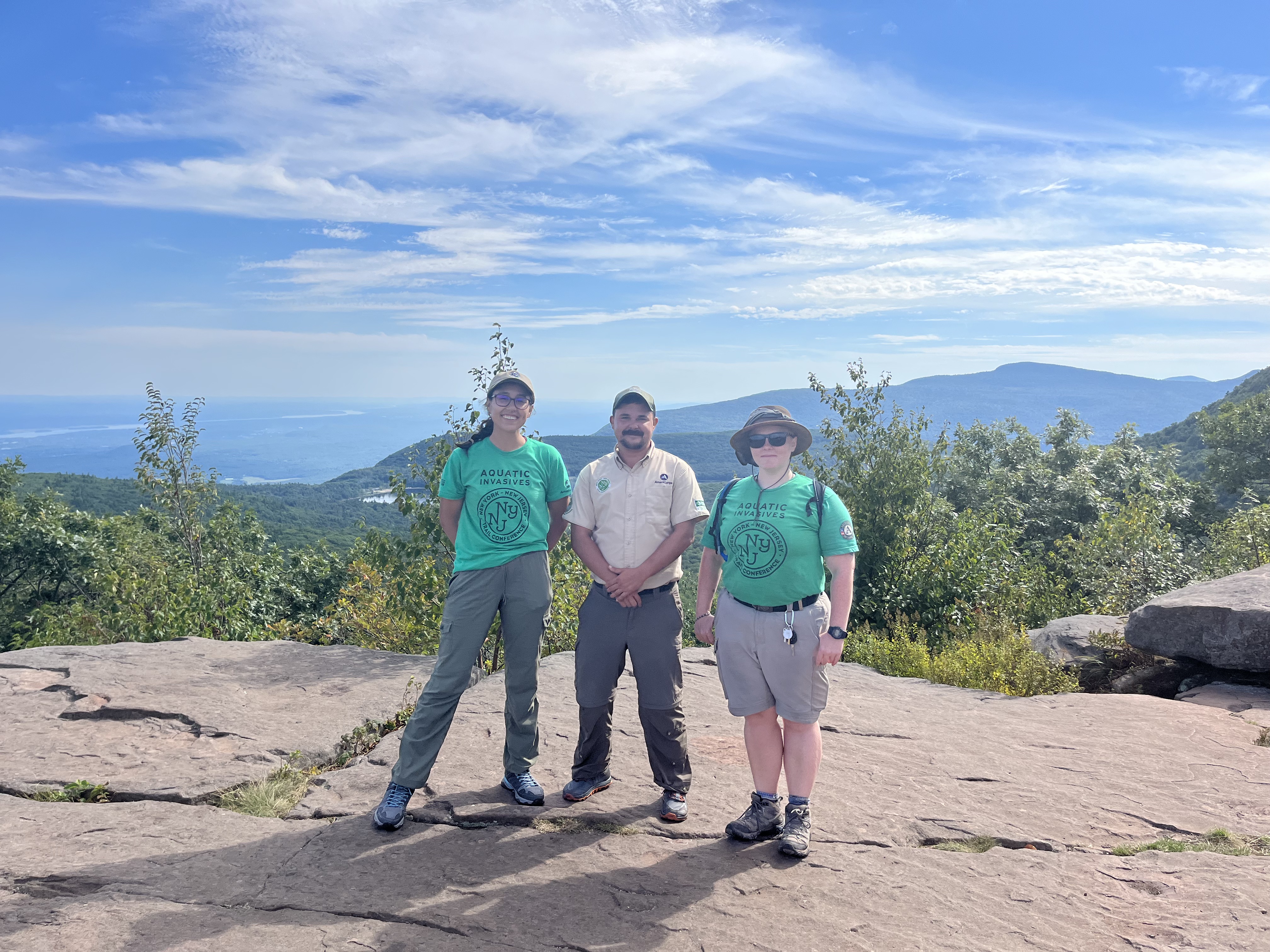
Public Health and Environmental Conservation: Interrelated Fields
Title

Body
After about 15 years primarily spent in the public health sector, I told bewildered friends and colleagues that I was taking a “hard left turn” in my career. I left a job working for New York’s largest hospital system, and with that, a decent salary, a manager title, and probably the best benefits I will ever have, to serve as an AmeriCorps volunteer with a small stipend, no benefits, and a temporary/seasonal status. The deeper into the program I got, the more it became abundantly clear: It’s not as much of a “hard left” as I originally thought. Public Health and Environmental Conservation aren’t discrete disciplines, but rather completely intertwined.
Sure, I traded computer screens and latex gloves for safety glasses and work gloves. I traded business casual for boots and pants that got muddy, shirts that got wet with sweat and rain, and a hat that kept the sun out of my eyes. My days looked different: my commute was hiking up a mountain instead of avoiding eye contact on the subway. I could count on one hand the number of emails I sent in a typical week, whereas before, there were days where I couldn’t count on one hand the number of meetings I had in a single day. I had an office with a window for the first time in my career, and there was never a line for the bathroom. But here’s what was the same: I spent a lot of time attempting to subtly alter human behavior, providing education and outreach, and appreciating the delicate balance that supports life and wellness.
It is no secret that the environment directly effects human health, and humans directly impact the environment, creating a constant feedback loop. As a Trail Steward, part of my responsibility was to educate people about Leave No Trace (LNT) principles. The most direct link between LNT and public health is, of course, waste management. We taught people to carry out human and dog waste when possible, or to responsibly bury it under 6-8 inches of soil and at least 200 feet from any water source (Leave No Trace, 2021). Aside from aesthetics, properly burying waste is important for mitigating the spread of harmful pathogens, such as E. coli or Giardiasis, for example. Stevenson, et al (2020) cite an overall lack of research within the public health realm regarding the impacts of human waste in the setting of outdoor recreation and express concern that it is an overlooked risk. They also reference studies demonstrating that pathogens can survive in fecal deposits for 6-12 months, depending on the environment, thus making them risky for humans and other animals that come in contact with them. Pathogens can leech into ground water and be carried to other areas, and in the age of antibiotics and hormones, which can be excreted, the contamination becomes even more problematic. So much so that some are advocating to do away with cat-holes and to promote packing out human waste instead (Langlois, 2022). Backcountry human and dog waste is both an environmental and public health issue.
Another big point of education was keeping people from wandering off the trails. On an individual level, this can directly affect safety of the individual; a simple browser search for risks of hiking off the established paths brings up dozens of articles about death and injury. On trail maintenance days, we engineered the physical environment to encourage staying on the trail. Connecting this with public health on a larger scale may seem a bit of a stretch, but stay with me. When we build a water bar and retread muddy trails, we are making an area more walkable, thus eliminating the development of social trails that degrade vegetation, promote the spread of invasive species, and encroach on natural habitats. Subtle visual design, direct cues (blazes, quality maps, etc.,) and education can help mitigate intentional and accidental off-trail travel (Martin & Butler, 2017). Treading off trails can be a vehicle for the spread of invasive species (Liedtke, et al, 2019) which degrades biodiversity and can increase human-pathogen contact. Take, for example, one of the invasive species that the Conservation Corps worked on last summer: Japanese barberry. This non-native plant has been shown to be a habitat for ticks and their hosts, thus impacting human health (ISAC, 2019). The second link has to do with methodology. In public health, I studied how the built environment—sidewalks, stairs, urban parks, etc.—are specifically engineered to encourage exercise and outdoor activity, thus promoting healthy behaviors. This, in combination with education about the importance of brushing one’s boots and staying on the trail, works to mitigate environmental impacts, thus having the downstream effect of protecting human health via protecting native ecosystems.
There is, of course, the very obvious link of greenspace and human health, especially when we look at urban parks. Creating trails and parks that are more accessible and are located in more urban environments promotes exercise, which positively impacts users’ emotional and physical health and wellness (and lowers overall healthcare costs.) While more robust studies are needed, those engaging in conservation activities also demonstrate enhancements in wellness due to physical activity, social connection, and emotional rewards (Lovell, et al, 2015). One of the challenges facing concrete jungles is wastewater and runoff due to the lack of soil and plants to absorb them, which contributes to pollution of the waterways, thus increasing human contact with pathogens. Additionally, this creates more opportunities for catastrophic flooding and erosion, which can lead to the loss of human life. Similarly, parks and greenspaces, especially in urban areas, remove toxins from the air and from rainwater, thus decreasing impact on human health (City Parks Alliance, 2022).
On a global scale, environmental pollution leads to more severe climate change, thus increasing the incidence of severe weather patterns. Stronger storms lead to more devastating erosion and degradation of the environment, which then increases the negative impacts to life (hurricanes, flooding, landslides) and the things needed to sustain it (crops, soil, trees, potable water). Zooming back in for a moment, off-trail travel degrades plants and soils, which can lead to erosion. This coupled with stronger storms and more intense weather can lead to landslides which can impact human populations. Climate change also has led to increased mating seasons and increased reach of populations of mosquitos and ticks (vectors), for example, which coupled with an expanding human population and encroachment on natural habitats of reservoirs (animals and environments that sustain vectors), is linked with increasing incidence and prevalence of known zoonotic diseases (malaria, lyme, etc.,) as well as emerging ones.
While it is easy to get overwhelmed by the vicious cycle of human impact on environment which affects human health, it is perhaps hopeful, too, that we have the ability to change this course through something as ‘simple’ as retreading a trail. This is what makes the Trail Conference and the Conservation Corps so incredibly valuable and special. Through the power of dedicated volunteers and staff, we contribute to a healthier environment, and thus, to a healthier human population. Public health and environmental conservation are intrinsically linked; the more we can acknowledge this, work collaboratively across disciplines, and trace these links back to the work we are doing, the greater our impact can be.

